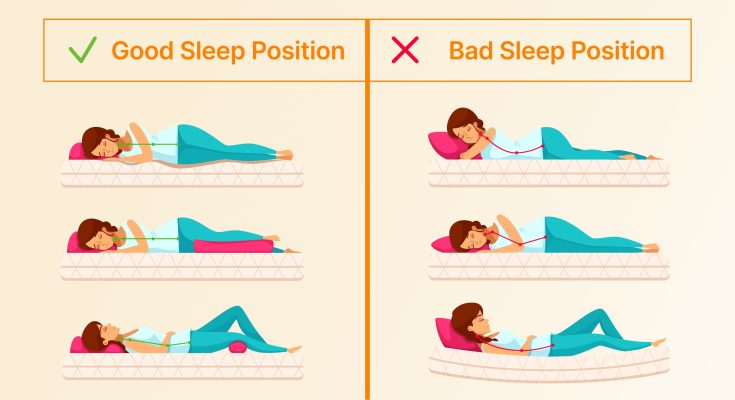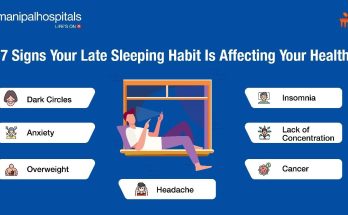In the relentless pursuit of peak performance and sustained productivity, the discerning professional meticulously optimizes waking hours, from strategic decision-making to rigorous exercise. Yet, the critical eight hours (or sometimes fewer) dedicated to sleep are often approached with less intentionality, overlooking the profound impact that even seemingly minor adjustments can have on recovery and overall well-being. Among these adjustments, the choice of sleep position, intimately linked to one’s unique body type and pre-existing health conditions, emerges as a pivotal factor. Understanding “Best Sleep Positions for Your Body Type” is not merely about comfort; it is a strategic investment in spinal health, respiratory function, and restorative rest, ultimately enhancing one’s physical and cognitive readiness for the demands of the day.
The human body is a marvel of intricate engineering, but its varied forms mean that a “one-size-fits-all” approach rarely yields optimal results, particularly concerning something as personal as sleep. Just as an architect designs a structure to accommodate specific loads and functions, individuals can tailor their sleep posture to support their unique physiological blueprint. The primary goal of any sleep position should be to maintain a neutral spinal alignment, from the head and neck down to the hips, thereby minimizing strain on discs, nerves, and muscles. When the spine is properly aligned, the body can fully relax, promoting deeper stages of sleep and more effective repair.
For individuals with an average build and no significant pre-existing conditions, the **back sleeping position** often offers the most straightforward path to spinal neutrality. Lying flat on the back naturally distributes weight evenly across the body, minimizing pressure points and allowing the head, neck, and spine to remain in a relatively straight line. This position is particularly beneficial for preventing neck and back pain when supported by a pillow that cradles the natural curve of the neck without elevating the head too much. A small pillow placed under the knees can further enhance lower back comfort by maintaining the natural curve of the lumbar spine and reducing tension in the hip flexors. For those prone to acid reflux, elevating the head slightly in this position can also be advantageous. However, back sleeping can exacerbate snoring and sleep apnea for some individuals, as gravity can cause the tongue and soft tissues to fall back into the airway.
The **side sleeping position** is arguably the most common and, when executed correctly, can be highly beneficial, especially for those with broader shoulders, during pregnancy, or for individuals prone to snoring. For side sleepers, the key is proper alignment of the head, neck, and spine, preventing the upper body from collapsing and creating undue pressure on the shoulder and hip. This typically requires a firmer, thicker pillow that fills the gap between the head and the mattress, keeping the neck aligned with the rest of the spine. Placing a pillow between the knees and ankles is also crucial, as it keeps the hips, pelvis, and spine in a neutral alignment, preventing the top leg from pulling the spine out of position. Without this support, the spine can twist, leading to back and hip pain. Side sleeping is also often recommended for its benefits in reducing acid reflux and improving circulation, especially for expectant mothers, as it can alleviate pressure on major blood vessels.
Conversely, the **stomach sleeping position** is generally considered the least advisable for spinal health. While it might feel comfortable to some, it places significant strain on the neck and lower back. To breathe, a stomach sleeper must turn their head to the side, maintaining this twisted posture for hours. This contortion can lead to chronic neck pain, stiffness, and potentially nerve impingement. Furthermore, stomach sleeping flattens the natural curve of the lower back, placing undue stress on the lumbar spine. For individuals with larger abdominal circumference, stomach sleeping can also put additional pressure on internal organs. If one finds it exceedingly difficult to transition away from stomach sleeping, using a very flat pillow or no pillow for the head, and placing a pillow under the pelvis to reduce lower back arching, might offer minimal mitigation, but the long-term goal should ideally be to shift to a side or back position.
When considering “body type” more broadly, individuals with specific physical characteristics or conditions should tailor their approach. Those with **larger frames** or **broader shoulders** may find side sleeping more comfortable, provided they use adequate pillow support to fill the larger gap between their head and the mattress. Similarly, individuals with **lower back pain** often benefit from back sleeping with a pillow under the knees or side sleeping with a pillow between the knees, as these positions help maintain the natural lumbar curve. Those with **respiratory issues** like sleep apnea, particularly with a higher BMI, are generally advised to avoid back sleeping due to the increased risk of airway obstruction, making side sleeping a more favorable option.
Ultimately, achieving optimal sleep posture is an iterative process of experimentation and self-awareness. It involves listening to your body’s signals upon waking, noting any stiffness, pain, or improved comfort. Investing in a supportive mattress and quality pillows tailored to your chosen position is as crucial as the position itself. Just as a business leader continuously refines strategy based on market feedback, individuals should adjust their sleep environment and posture based on their body’s feedback, recognizing that optimal rest is a non-negotiable component of sustained health and high performance. It is a subtle yet powerful strategy, ensuring that every night’s sleep contributes to a refreshed mind and a resilient body, ready to tackle the challenges of a new day in Bangkok or anywhere else in the world.




